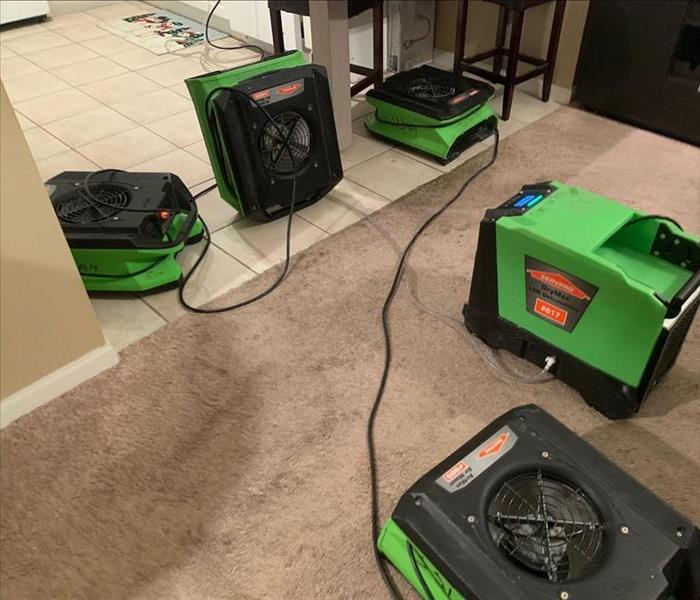Understanding the Spread of Mold: How It Happens and What You Can Do
7/10/2024 (Permalink)
 We explore the various ways mold can spread within your home and provide tips for preventing its proliferation.
We explore the various ways mold can spread within your home and provide tips for preventing its proliferation.
Mold is a common household problem that can spread quickly if left unchecked. Understanding how mold spreads is crucial for effective prevention and remediation. In this blog post, we'll explore the various ways mold can spread within your home and provide tips for preventing its proliferation.
Through Airborne Spores
Mold spreads primarily through airborne spores. These microscopic particles are released into the air when mold colonies are disturbed, such as during cleaning or renovation activities. Once airborne, mold spores can travel through the air currents and settle on surfaces throughout your home, where they can germinate and proliferate under the right conditions.
Through Contact with Contaminated Surfaces
Mold can also spread through direct contact with contaminated surfaces. When mold spores land on surfaces such as walls, ceilings, furniture, or household items, they can attach and begin to grow if moisture and organic material are present. Touching or disturbing mold-contaminated surfaces can dislodge spores and spread them to other areas of your home.
Through HVAC Systems
HVAC (Heating, Ventilation, and Air Conditioning) systems can contribute to the spread of mold throughout your home. Mold spores can enter HVAC systems through intake vents or leaks in ductwork, where they can accumulate and spread through the air ducts to other rooms. Poorly maintained HVAC systems with inadequate filtration can exacerbate mold spread.
Through Water Intrusion
Water intrusion is a common cause of mold growth and spread within homes. Leaks from plumbing fixtures, roof leaks, floods, or high humidity levels can introduce moisture into your home, creating ideal conditions for mold growth. Mold can spread rapidly in damp environments, moving from the initial source of moisture to adjacent areas.
Through Personal Belongings
Mold can also spread through personal belongings such as clothing, furniture, and household items. Mold spores can attach to these items and be transported from one location to another, spreading mold throughout your home. Contaminated belongings should be properly cleaned and disinfected to prevent further spread of mold.
Tips for Preventing Mold Spread
Maintain Proper Indoor Humidity:
Keep indoor humidity levels between 30% and 50% to inhibit mold growth and spread. Use dehumidifiers in damp areas and ensure adequate ventilation throughout your home.
Address Water Intrusion Promptly:
Promptly repair any water leaks, plumbing issues, or water damage to prevent mold growth and spread. Thoroughly dry affected areas within 24-48 hours to prevent mold from taking hold.
Clean and Disinfect Contaminated Surfaces:
Regularly clean and disinfect surfaces prone to mold growth, such as bathrooms, kitchens, and basements. Use mold-inhibiting cleaners and proper ventilation to prevent mold from spreading.
Maintain HVAC Systems:
Regularly inspect and maintain your HVAC system to prevent mold buildup in air ducts and components. Change air filters regularly and ensure proper ventilation to minimize mold spread through HVAC systems.
Mold can spread quickly and easily within your home, posing a threat to both your property and your health. By understanding the various ways mold spreads and implementing preventive measures such as maintaining proper humidity levels, addressing water intrusion promptly, cleaning and disinfecting contaminated surfaces, and maintaining HVAC systems, you can effectively prevent mold spread and maintain a healthy indoor environment. If you suspect mold growth or need assistance with mold remediation, contact a professional restoration company like SERVPRO® for expert assessment and remediation services.




 24/7 Emergency Service
24/7 Emergency Service